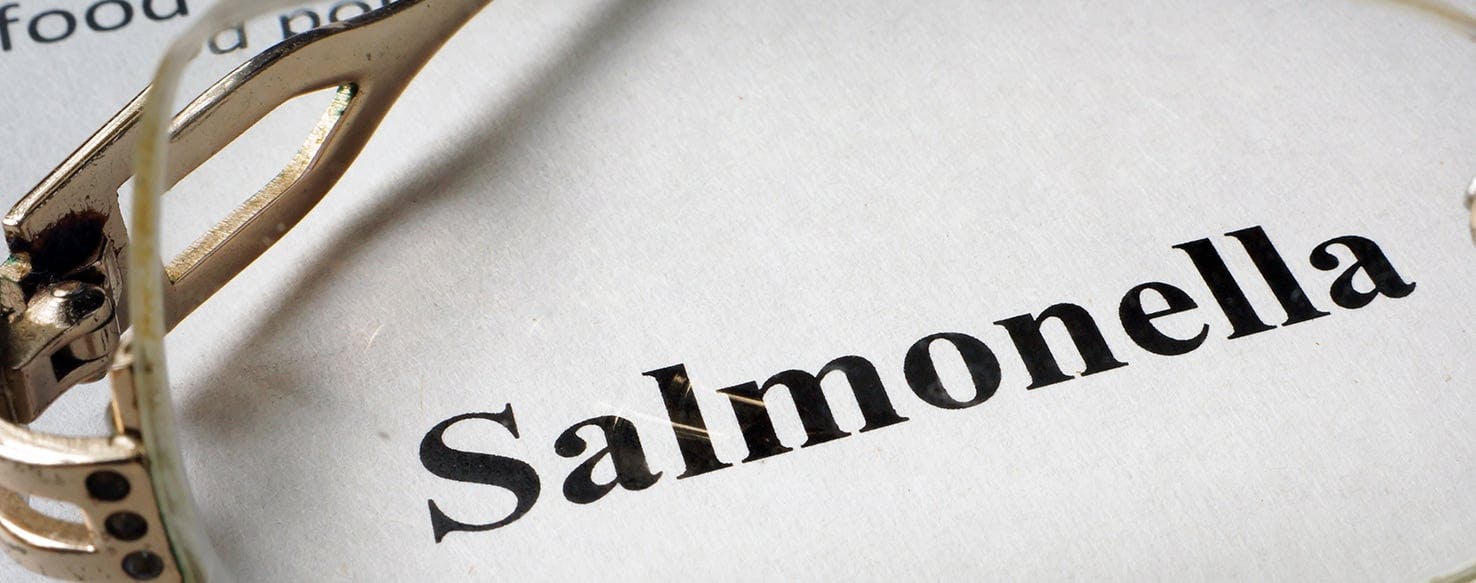
Save on pet insurance for your pet
You don't have to choose between your pet and your wallet when it comes to expensive vet visits. Prepare ahead of time for unexpected vet bills by finding the pawfect pet insurance.
Dogs seem to be naturally talented at hoovering up every leftover crumb or food found on the floor. But can your dog contract the same kind of illnesses from food that you can? Take salmonella for example. Salmonellosis is an infection caused by Salmonella bacteria commonly found in raw meat or eggs. In humans, it’s a particularly unpleasant condition to come down with and if you are old or an infant, you are more likely to suffer with it. You should take caution when handling salmonella as there is always a concern over dehydration. But can your dog even contract salmonella?
Can Dogs Get Salmonella?
YES!
Many people may think that because dogs eat all manner of things on their walks, that their stomachs are strong enough to keep Salmonella at bay, but in fact, dogs certainly can suffer with salmonella! Fortunately, diagnosis and treatment is often relatively straightforward.
Does My Dog Have Salmonella?
You can expect to see symptoms within 72 hours of your dog contracting salmonella. Does your dog have a fever? Is it suffering with diarrhea and vomiting? Has your dog lost his appetite and does he appear lethargic and depressed? Is your dog dehydrated and uninterested in usual activities? These are all symptoms that could indicate you dog is suffering from salmonella infection.
But what causes salmonellosis? It comes from Salmonella bacteria and while it is usually found in raw meats and eggs, it can also be transmitted through the feces and saliva of infected animals. Salmonella is more prevalent amongst younger and older dogs, whose immune systems may be weaker. Dogs taking antibiotics may also be more susceptible to the Salmonella bacteria, as they may have an imbalance of healthy bacteria in their intestinal tracts.
Your vet will want to diagnose the condition promptly. He will look for physical symptoms, they will want to send urine and fecal samples for testing to identify the bacteria, and may also wish, through conversation, to identify how the dog caught salmonella. Once a diagnosis has been made, appropriate treatment options can be explored. For more detailed information on the symptoms, causes and diagnosis of salmonella, learn more at Salmonella Infection in Dogs .
How Do I Treat My Dog’s Salmonella?
The good news is, mild salmonella can usually be treated at home. The main focus with treatment is to support the dog’s natural recovery. This entails keeping an eye out for dehydration and ensuring they get enough fluids and nutrients in their body. In some cases, the vet will also prescribe antibiotics to help fight the bacteria or prevent shock.
However, if the case is more severe, your dog may need to be hospitalized. If your dog is unable to keep any fluids down, they may be administered via IV. There is also a possibility of your dog developing a blood infection or sepsis and that may require a blood transfusion.
If your dog has not developed sepsis, they have a very good chance of full recovery. Your dog will gradually build their strength back up, but it may takes weeks to fully shake all of the salmonella bacteria. To aide in swift recovery, hygiene is important. Washing your hands, cleaning bowls they eat and drink out of, and not letting them lick your face, will all help to limit the spread of the bacteria.
It can often help to hear first hand accounts from other owners about the more serious symptoms , plus see frequently asked questions answered by our in-house vets.
How Is Salmonella Similar In Dogs and Humans?
There are a lot of similarities in the symptoms of salmonella infection seen in dogs and humans. Some of those symptoms are as follows:
-
Both dogs and humans may suffer with persistent vomiting and diarrhea.
-
Both may appear lethargic and uninterested in their usual daily activities.
-
Both dogs and humans may suffer with visible signs of dehydration.
-
Both may show signs of depression: excluding themselves, wishing to stay isolated and displaying unusual sleeping patterns.
-
There will also often be symptoms of fever in both dogs and humans.
-
Both dogs and humans may lose their appetite.
How Is Salmonella Different In Dogs and Humans?
While we have seen many similarities in the symptoms and causes of salmonella, it is also worth noting some of the differences. Some of those differences are:
-
Dogs sometimes catch salmonella from eating infected feces or coming into contact with other infected animals, whereas in humans it is more likely to be from eating undercooked meat or eggs.
-
Some humans develop reactive arthritis after suffering with salmonellosis, this is seen far less in dogs.
-
Humans often suffer with abdominal cramps, but we are less sure that dogs suffer with this as a result of salmonella.
Case Study
Furbie was a 1-year-old Yorkshire terrier who started to display symptoms of salmonella after playing with his family’s pet turtle. Fortunately, it cleared up after several days of severe vomiting and diarrhea. This showed firstly, that symptoms clear up by themselves, but secondly that your dog can catch it from even the most unlikely suspects, such as your other pets.
You may also like
